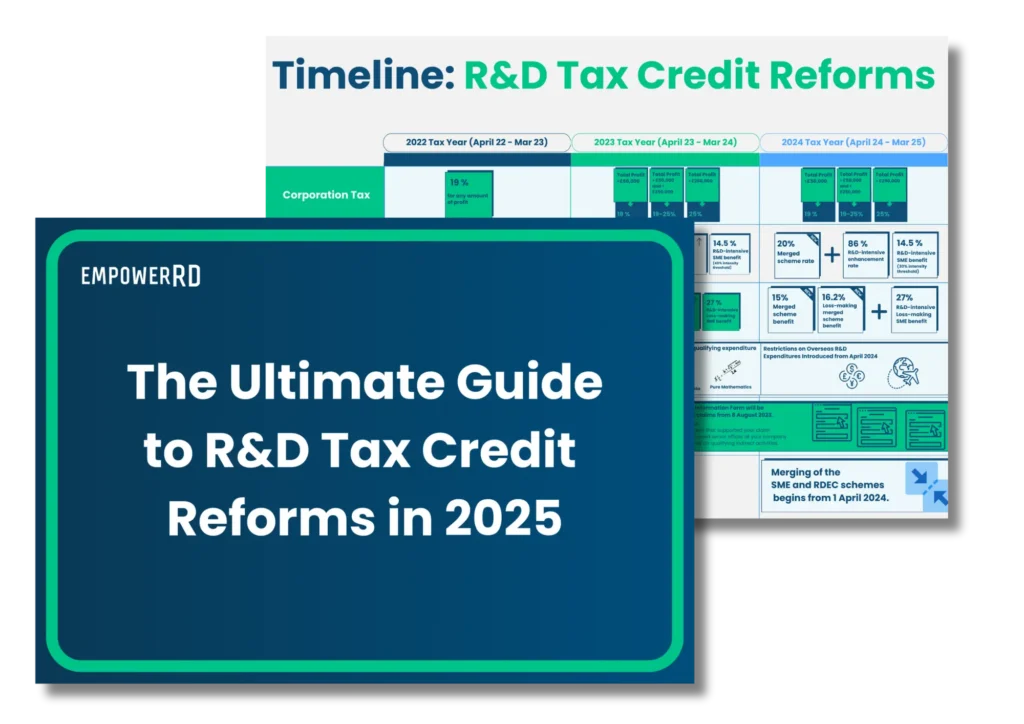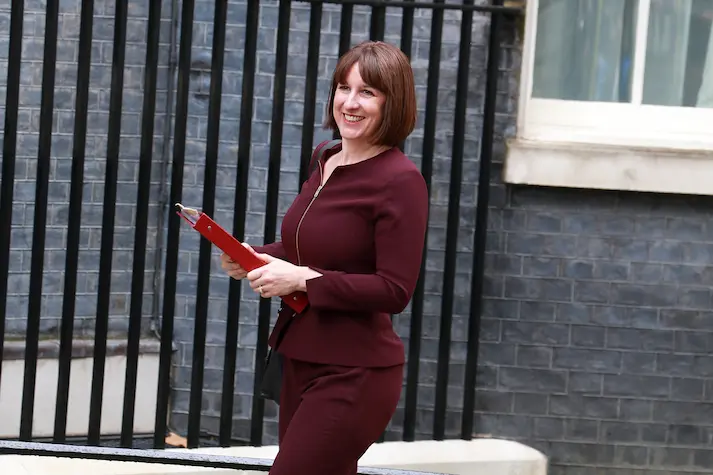Today is World Creativity and Innovation Day, an excellent opportunity to recognise the importance of innovation.
Here at EmpowerRD, we know first-hand how critical innovation is in driving growth and success for UK businesses, which is why we love our work – helping thousands of UK businesses receive funds for their R&D projects.
From talking to innovative businesses over the years, we’ve learnt that creativity plays an essential role in solving complex problems – but it doesn’t just stop there; innovation needs continual processes to get the best results.
That’s why many businesses we work with use a proven framework to bring new ideas to market, the ideation-to-launch process. In this article, we’ll explore each stage of the process, from ideation to launch, and show how businesses can use creativity and innovation to drive growth.
Ideation
Ideation is the first stage of the creative process. It involves generating and capturing ideas to solve a particular problem or meet a customer’s needs. There are various techniques that businesses can use to generate ideas, including brainstorming, mind mapping, and design thinking. These methods encourage teams to think creatively and explore new possibilities.
Brainstorming is a widely used technique to generate ideas and solutions to problems. The group activity encourages team members to share their thoughts without judgment or criticism. During a brainstorming session, team members are encouraged to think outside the box and develop as many ideas as possible. At this stage, the focus is on quantity rather than quality, as all opinions are potentially valuable. Once all the ideas are gathered, the team can evaluate and select the most promising ones.
Mind mapping is another technique that can be used during the ideation phase. It involves creating a visual representation of ideas and concepts using a diagram. This technique is beneficial for those who think visually, as it helps to break down complex ideas into smaller, more manageable parts. A mind map starts with a central idea or concept and then branches to related ideas and subtopics. It allows the team to explore and organise their thoughts in a more structured way.
Design thinking is a human-centred problem-solving approach involving empathy, collaboration, and experimentation. It encourages teams to focus on the user or customer’s needs and to develop creative solutions that meet those needs. This approach involves five stages: empathise, define, ideate, prototype, and test. The ideation stage in design thinking consists of generating many ideas and then selecting the most promising ones to move forward with. This process allows teams to think creatively and develop innovative solutions tailored to the needs of the user or customer.
Feasibility, Viability and Desirability
However, creativity is not just about generating as many ideas as possible. Businesses also need to select the most promising ideas to pursue further. To do this, they can use feasibility, viability, and desirability criteria.
Feasibility: whether the idea can be implemented with the available resources and technology.
Viability: whether the idea can generate a sustainable revenue stream.
Desirability: whether the idea meets a customer’s needs or solves a problem they face.
Concept Development
Once a business has identified a promising idea, the next stage is concept development. This involves defining the chosen picture and its purpose, conducting market research to validate the idea, and creating a prototype or mockup to visualise it.
Defining the idea and its purpose involves clarifying the problem the idea solves, the target customer, and the unique value proposition. This information helps the business to develop a clear vision for the product or service.
Market research is critical to validating the idea. This involves analysing market trends, customer needs, and the competitive landscape. Businesses can use various methods to conduct market research, including surveys, focus groups, and online research tools. This information helps the company to understand the potential demand for their product or service and identify any barriers to entry.
Creating a prototype or mockup is an effective way to visualise the idea and get feedback from stakeholders. Prototyping can take various forms, from a physical model to a digital mockup. A business we work with, Vertical Aerospace, used virtual reality technology to create a 3D model of their electric vertical takeoff and landing (eVTOL) aircraft. This allowed them to test the design and get feedback from customers and investors before building a physical prototype.
Planning
Once the concept has been developed and the idea validated, it’s time to move on to planning. This is where the team maps out a detailed project plan, allocates resources and budget, and defines timelines and milestones.
A detailed project plan is crucial for ensuring the project stays on track and meets its objectives. It’s essential to identify all the tasks that need to be completed, estimate how long each task will take, and assign them to team members. The project plan should also include a timeline so everyone knows when each task needs to be completed and milestones so that progress can be tracked.
Allocating resources and budgets are also a crucial part of the planning process. It’s essential to ensure the team has the resources they need to complete the project, whether software, hardware, or other tools. The budget needs to be carefully managed to ensure that no unexpected expenses could derail the project.
Execution
With the plan in place, it’s time to move on to execution. This is where the team starts working on the project, assigning roles and responsibilities, conducting regular team meetings, and adapting to changing circumstances and feedback.
Assigning roles and responsibilities is an integral part of the execution process. Each team member should clearly understand their role and responsibilities, as well as what is expected of them. This helps to ensure that everyone is working towards the same goal.
Regular team meetings are crucial for ensuring everyone is on the same page. This is an opportunity for team members to discuss progress, raise issues, and provide feedback. Ensuring these meetings are productive and focused on the project’s objectives is essential.
Adapting to changing circumstances and feedback is also essential to the execution process. As the project progresses, new challenges will likely arise, or the team may receive input that requires them to pivot or adjust their approach. It’s essential to be open to feedback and willing to adapt as needed.
Launch
The final stage of the creative process is the launch. This is where the team prepares for launch day, implements marketing and sales strategies, and collects feedback to iterate based on results.
Preparing for launch day involves ensuring that everything is in place for the launch. This includes ensuring the product is ready, the marketing and sales strategies are in place, and everyone knows the launch date.
Implementing marketing and sales strategies is crucial for ensuring a successful launch. This may involve advertising, promotions, or other methods to build awareness and generate interest in the product.
Collecting feedback and iterating based on results is also essential for ensuring the launch’s success. By collecting user feedback, the team can identify any issues or areas for improvement and make the necessary changes to improve the product.
Creativity and innovation are crucial for success
Innovation is crucial for the success of any business, and the ideation-to-launch process provides a structured approach to achieving that innovation. By following the steps of ideation, concept development, planning, execution, and launch, businesses can bring their innovative ideas to life and achieve their goals.
And since it’s World Creativity and Innovation Day, why not grasp the opportunity to get the creative juices flowing? Get together with your team, share a pizza and a beer, and start unlocking new opportunities to create lasting value for your customers and stakeholders.
Thank you for reading, and happy World Creativity and Innovation Day!
Seeking a trusted partner to help you build your R&D tax claim?
We’re here to help. Over 1000 UK companies have trusted EmpowerRD’s R&D platform and specialists to help them build optimised, compliant R&D tax claims. Please get in touch with one of our experts today if you have any further questions.












